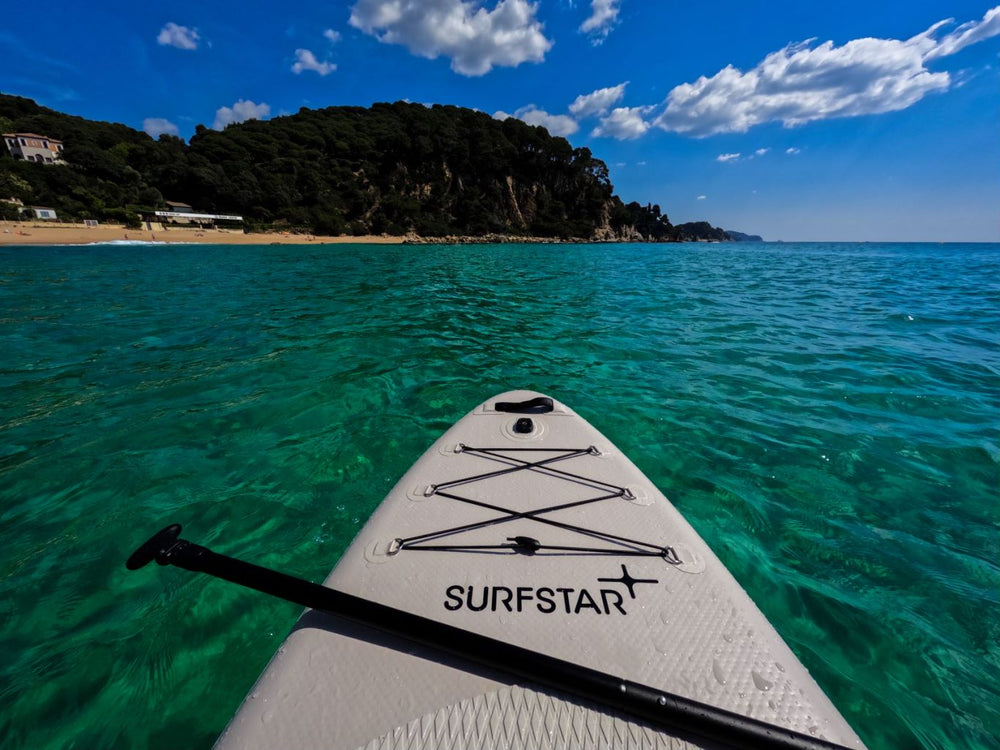Different SUP Hull Types
For many people, once you experience riding a paddle board, you want to go out straight away and buy your own. However, when you go to purchase your own SUP, you will soon come to realize that it can be quite a complex process, as there are many different types of paddle boards out there. Most people buy paddle boards for fun and fitness, so the boards are more geared towards leisure use, whilst some people will buy paddle boards for touring or racing, therefore requiring a board that can cover a long distance and reach high speeds with good tracking rather than maneuverability.
The good news is, the hull type, volume, length, width and core materials of SUPs are all customizable, so you can choose a board that is perfect for you. In this article we are going to look at different SUP hull types and why you may choose one rather than the other.
There are three types of hulls, and they are planing hulls, displacement hulls and hybrid hulls. The hull of a paddle board plays a really significant role in determining how the board performs in the water. Beginner paddlers can use either shape well, but there are differences between the hull types that make them more suitable for some activities rather than others.
A planing hull is flat and wide, with a similar appearance to a surfboard. These boards are designed to ride on top of the water, and you should be able to easily maneuver them. These paddle boards are very flat bottomed and have a rounded nose as well as an upwardly curved shape at the front, which allows you to maneuver easily. Boards with planing hulls are well suited to activities like leisure paddling, surfing, SUP yoga and whitewater. If you fancy paddleboarding in the waves, then a paddle board with a planing hull is a great choice as the shape makes it easier to carve through the waves with added stability.
By contrast, paddle boards with displacement hulls have a pointed nose/front end that resembles the shape of a canoe or a kayak. Due to its more streamlined shape, the hull slices through water as the nose pushes the water to the sides of the SUP. This shape improves the paddle board’s efficiency and creates a faster, smoother ride. As well as this, the efficiency of a displacement hull requires you to exert less energy to paddle than with a planing hull which will allow you to paddle for longer distances at a greater speed. They generally track in a nice and straight way; however, they are a little less maneuverable than paddle boards with planing hulls, which makes them less suitable for choppier water.
You may choose a paddle board with a displacement hull rather than a planing hull for activities that require more paddling efficiency and higher speeds like fitness paddling, SUP touring/camping and racing. If you live near a lake or pond and will be experiencing mostly flat-water conditions, then a board with a displacement hull is a great choice. The flat-water conditions will allow you to go on longer paddles or even train towards the goal of entering a race, making a board with a displacement hull your best option.
If you would like the ability to paddle board on a variety of water, from small surf to flat water cruises, you may choose to purchase a hybrid SUP. Designed for versatility, a combination hull/hybrid SUP is an attempt to blend the best features of planing and displacement hulls into one board to allow you more speed than a planing hull and a decent experience in all types of water. How
The largest difference between both types of board is that the displacement hull’s aim is to have the water go around the board, whereas the planing hull creates a lift and forces the water underneath.
In terms of speed, the displacement hull is faster and more efficient, whereas the planing hull is slower, albeit more stable. You have to use more energy to build speed when using a paddle board with a planing hull, so this may not be ideal if you are planning to use it for long tours or for racing. Displacement hulls perform the best on smooth water, while planing hulls come into their own on choppier water.
As you can see, there are a number of differences between the two types of hulls, and one is not better than the other. It all comes down to whatever you are doing with the board and where you are using it, although if you want to use it for a variety of activities then a hybrid one may be your best option. You should keep in mind though, that a hybrid board is an all-rounder, so while it performs decently in all areas, it is not amazing at any of them. In the end, it is up to you to choose which type of board you would like, and this decision will be made easier once you know what activities you will be doing, and in what kind of water.





Leave a comment